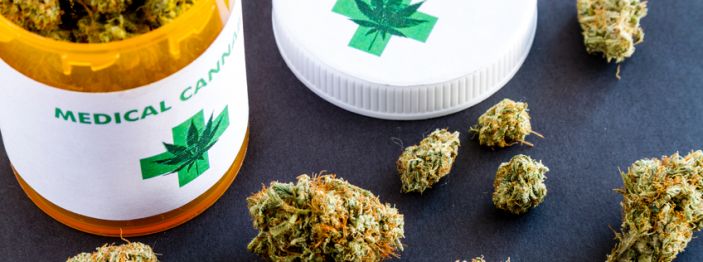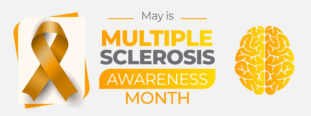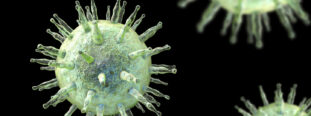Medical marijuana – the Canadian experience
The medical use of marijuana has become increasingly common in recent years with the slow accumulation of research studies indicating that it may be helpful for certain chronic conditions, such as nerve pain and spasticity. A recent survey of people with various pain syndromes found that about 50-75% said that marijuana provided significant pain relief, with many being able to reduce their use of other pain relievers, such as opioid narcotics (Troutt and colleagues. J Psychoactive Drugs 2015;47:259–266). In Canada, about 4% of Canadians over the age of 14 years have tried marijuana for medical purposes (Canadian Centre on Substance Abuse. Canadian addiction survey 2004: www.ccsa.ca/Resource%20Library/ccsa-004028-2005.pdf).
Marijuana (Cannabis spp.) contains about 60 biologically active chemicals called cannabinoids. The main active ingredient is THC (tetrahydrocannabinol), which binds to receptors in the brain, thereby inhibiting nerve signalling in the brain’s pain centres (Walker and colleagues. Proc Natl Acad Sci USA 1999;96:12198-12203). THC also causes the psychological effects commonly associated with smoking marijuana. Another important cannabinoid is CBD (cannabidiol), which produces anti-inflammatory and analgesic effects without causing psychological effects. CBD can also reduce some of the common side effects of THC, such as sedation, anxiety and rapid heartbeat.
Medical marijuana is most commonly smoked. The marijuana leaf/buds or a cannabis extract oil can be orally ingested, either alone or mixed with foods. When smoked, about 25% of the THC is metabolized by the body (Carter and colleagues. IDrugs 2004;7:464-470). The physical effects are felt more quickly if marijuana is smoked; there is less of a peak drug level when orally ingested, but the effects last longer (Huestis MA. Chem Biodivers 2007;4:1770-1804). Once in the body, marijuana will interact with other medications so some caution is needed. Marijuana effects can be increased if the drug is taken in conjunction with antibiotics, antifungal drugs, proton pump inhibitors (e.g. Losec), heart medications and some antidepressants. Some drugs, such as St. John’s wort, and some medications for epilepsy or diabetes, will reduce the effect of marijuana.
There is no established dose of marijuana, and the potency and effects will vary depending on the type used and the relative proportions of THC and CBD. Among those using medical marijuana, 42% self-medicate 2-3 times per day; the most common dosing is about 6-9 grams of marijuana per week, with 40% consuming over 14 grams per week (Walsh and colleagues. Int J Drug Policy 2013;24:511-516). Pricing will also vary widely depending on what you buy. Health insurance typically doesn’t cover the cost of marijuana, so treatment can get expensive. The price typically ranges from $5-15 per gram, so the average user will spend about $30 to $150 per week. Some insurers, such as the Canadian Pension
Plan-Disability, the War Veterans allowance, and the Ontario Disability Support Program may provide financial assistance.
To obtain medical marijuana in Canada, you must see a health professional (either a physician or nurse practitioner), who will provide you with a medical document. This document must include your name, date of birth, your medical practitioner’s details (name, licence number, address, contact information, etc.), and the amount of marijuana you are allowed to use daily.
This medical document is used to register with a licensed medical marijuana producer. At present, there are 36 licensed producers in Canada; a full list of producers is available at www.hc-sc.gc.ca/dhp-mps/marihuana/info/list-eng.php. Once your application has been processed, the producer will ship the marijuana to you or your medical practitioner. At present, storefront operations are not legally permitted to dispense marijuana.
The amount you can possess at any given time is a 30 days’ supply of the prescribed dose to a maximum of 150 grams. So if you are prescribed more (e.g. 6 g/day), you will not be able to get a month’s supply at one time.
Here are a few tips about using medical marijuana.
– You may need to try different marijuana strains before you find the right one. Opt for a higher CBD/lower THC content if you do not want the psychological effects. Try taking it orally (recipes are available online) if you don’t want to smoke or if you have respiratory problems.
– Avoid marijuana if you have a serious psychiatric illness, such as bipolar disorder or schizophrenia.
– Avoid mixing marijuana with other drugs (including alcohol). Ask your physician or pharmacist if marijuana will interact with other prescriptions you’re taking. Avoid driving while under the influence.
– Do not travel to another country with your marijuana. A note from your doctor will not protect you in another country where marijuana is illegal.
– Be aware of signs of marijuana dependence, which affects about 1 in 10 frequent users. Signs of dependence include: more marijuana is needed to achieve the same effect; withdrawal symptoms (e.g. irritability, difficulty sleeping, depression); spending a lot of time using or recovering from marijuana; giving up important activities because of marijuana use; and wanting to cut down but feeling you cannot.
– Your medical certificate enables access to medical marijuana within a specified time. Possession of marijuana after the certificate expires is technically illegal. See your doctor to get a new certificate to avoid any hassles.
Share this article
Facebook Twitter pin it! Email
Related Posts
Back





